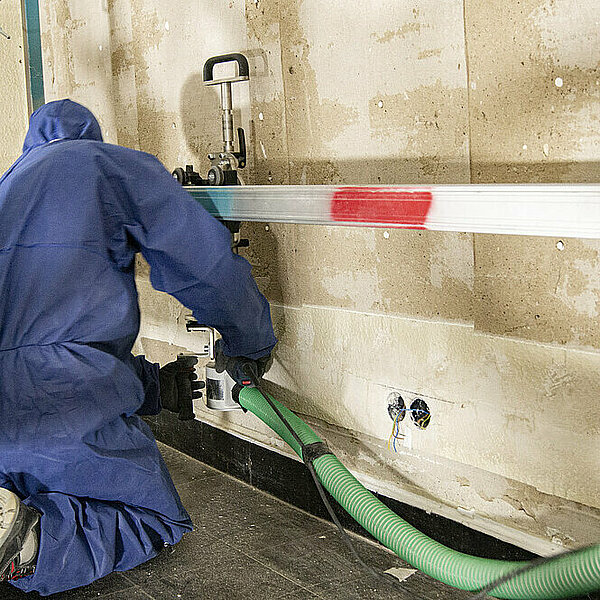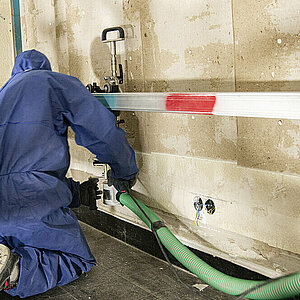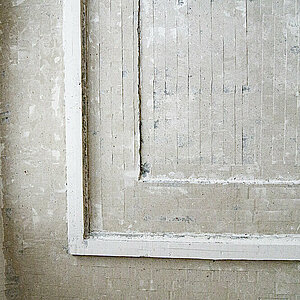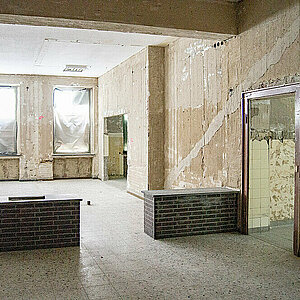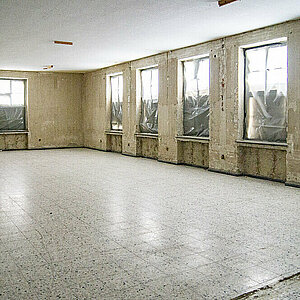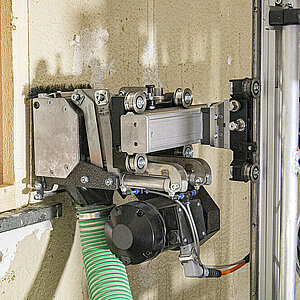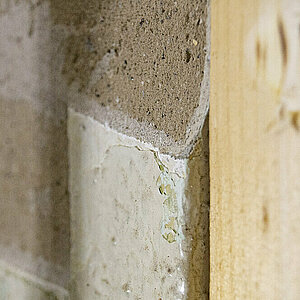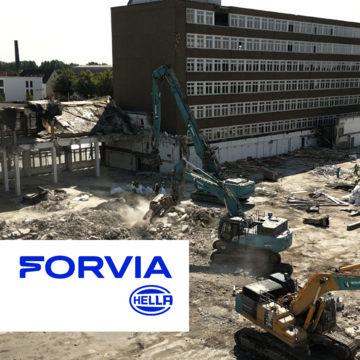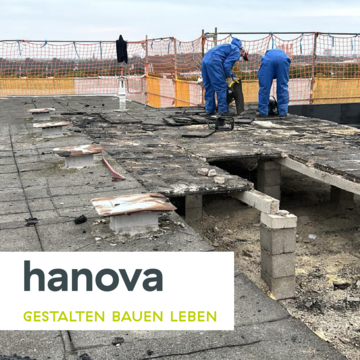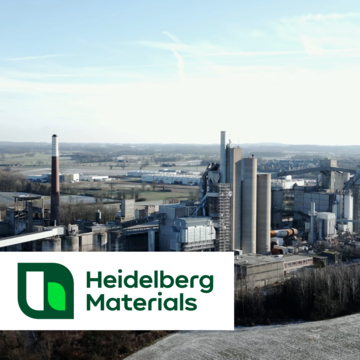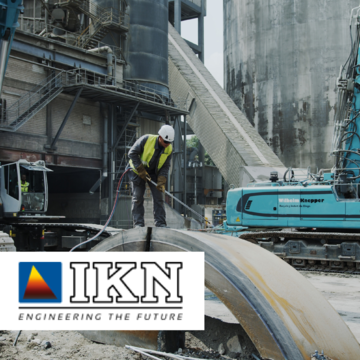![[Translate to Englisch:]](/images/_processed_/2/e/csm_knepper_kundenreferenzen_armand-adam_logo_1b7ea412af.png)
Innovative refurbishment technology
listed buildings
Wilhelm Knepper GmbH & Co. KG efficiently renovates the asbestos-containing building fabric of a listed barracks using low-emission milling methods.
Work carried out
- Removal and disposal of asbestos-containing wall and ceiling fillers on approx. 17,000 square meters
- Complete gutting of the listed building fabric
Machines in use
- Milling technology BT 43
- Extensive airlock and UHG technology
- Various small and compact devices
The project in detail
32 meters long, 20 meters wide and a proud 7 meters high, the "ballroom" is the most imposing room in the two barracks buildings in the west of Soest, where modern condominiums are to be built in the future. And just like the smaller neighboring rooms, it is plastered from floor to ceiling with a resistant but extremely dangerous coating. "We have around 20,000 square meters of asbestos-containing area to deal with here, spread over more than 200 rooms," explains Hendrik Schäfer, who is coordinating the remediation work by Knepper as site manager.
The former soldiers' quarters in Soest are actually a typical case of black areas and months of manual chiseling and milling in elaborately equipped negative pressure remediation areas.
However, the demolition and renovation specialists from Lippstadt have invested in newly developed low-emission milling methods for wall (BT 43) and ceiling surfaces (BT 44) from ASUP GmbH, which are being used for the first time on this scale in Soest.
"A variety of innovative techniques are being used and combined on this construction site in order to achieve maximum cost-effectiveness," says Achim Bräutigam from ASUP, who provided Knepper with the technology and expertise. Using rail-guided milling machines, trained employees can remove large areas of plaster and filler from walls and ceilings in a short space of time.
With two people, we can cover around 400 square meters in two days, which would be unthinkable using conventional methods," says Schäfer, who is particularly proud of the exceptionally fast renovation of the "ballroom" with its high ceilings.
In order to remove the pollutants from the latter using the BT-44 method, a rolling scaffold was specially constructed that enables precise work to be carried out at height without releasing asbestos fibers.
The new technology makes the installation of airlocks and working areas with negative pressure superfluous; instead, the negative pressure is monitored directly at the milling machine. Expensive clearance measurements, which would be necessary for each room in conventional refurbishment, can be largely eliminated. "The new BT processes are a self-contained system. Nobody comes into contact with the hazardous waste; it ends up directly in easy-to-transport big bags outside the building via hoses," explains Bräutigam, who sees this as the biggest advantage in addition to the fast set-up times.
Added to this is the millimeter-precise removal, which means that only contaminated wall and ceiling cladding is removed. Up to 12 mm can be milled off concrete walls or screed in a single operation. The rail-guided milling machine only reaches its limits in corners and around windows, which is why the BT-43 and -44 processes are designed for combined use with conventional corner milling machines, which have also been modified to create self-contained systems.
More refurbishment less time
Whereas previously an average of five people carried out the asbestos work with hand-held cutters and chisels, the new process only requires two skilled employees who can operate the wall cutter in an ergonomic and relaxed manner and rework by hand if necessary. "That's a huge saving in terms of manpower, materials and time," explains Holger Hölscher, foreman at Knepper and an expert in the field of contaminant removal.
A showcase project for everyone involved. "Schäfer and Bräutigam agree: "The certified milling systems will be of interest to many due to their advantages and will be used more frequently. The work should be completed in the fall and the buildings handed over to the client free of pollutants.
Your contact person
SALES DEMOLITION AND DISMANTLING
Phone: +49 2941 2841-310
E-Mail: vertrieb@knepper-gruppe.de

